- What is "landscape fragmentation"?
- Related term: habitat fragmentation
- Habitat loss vs. fragmentation per se
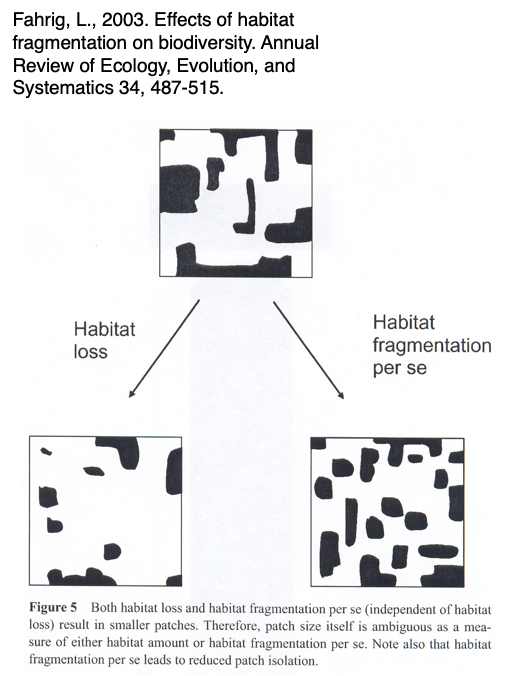
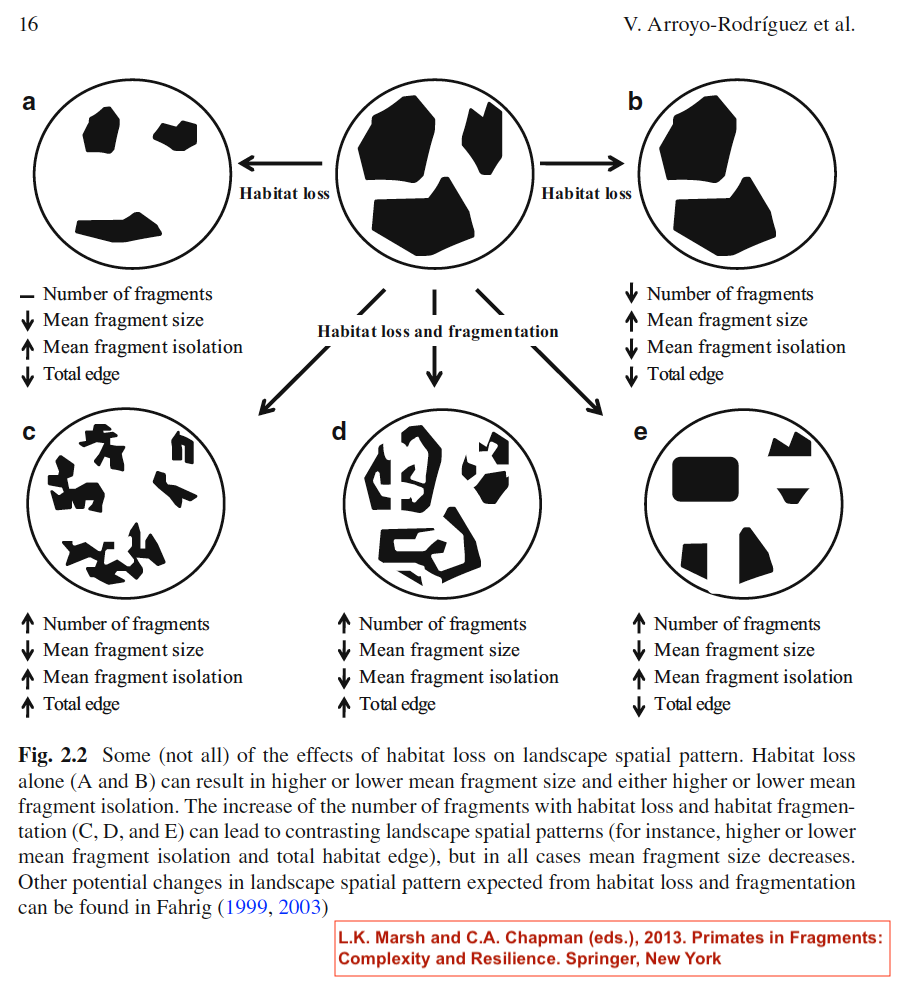
(2) Functional or behavioral connectivity: Refers to how connected an area is for an ecological process, such as dispersal of plants and animals, and energy and nutrient flows.
- A simple random process is assumed in percolation models.
- A striking feature in percolation is that the threshold phenomenon occurs at the critical density or critical probability (Pc). For example, in a 2-dimensional square lattice, Pc = 0.5928 (if 4-neighbor rule is used) or Pc = 0.407 (if 8-neighbor rule is used).
- Percolation models suggest that there may be thresholds in connectivity which influence flows of energy, materials and organisms.
- Real landscapes may have a Pc lower than the theoretical value derived from percolation theory.
- Empirical studies indicate that landscape connectivity is a
function not only of the interconnectedness among landscape
elements but of how organisms perceive and move through
complex mosaics (Wiens et al. 1996).

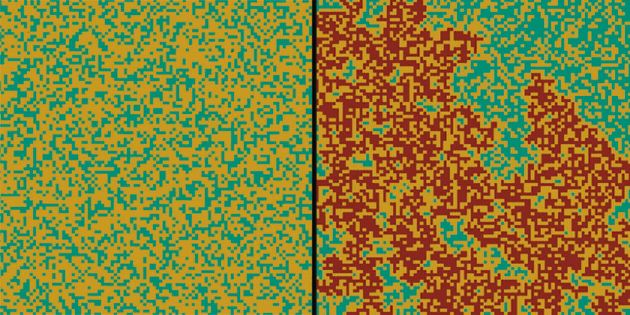
Taubert, F., R. Fischer, J. Groeneveld, S. Lehmann, M. S. Muller, E. Rodig, T. Wiegand, and A. Huth. 2018. Global patterns of tropical forest fragmentation. Nature 554:519-522+.
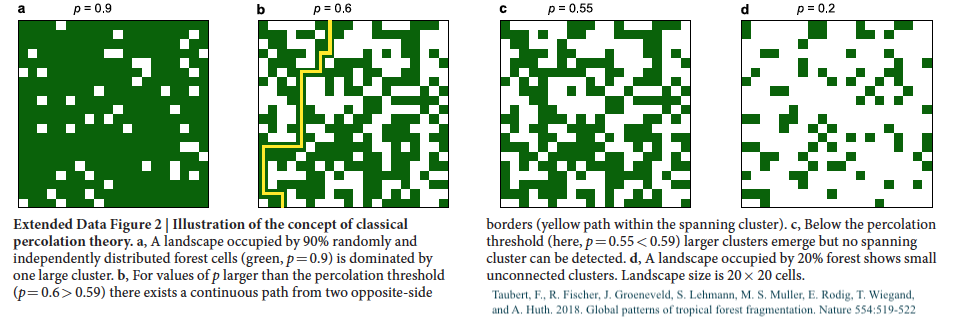
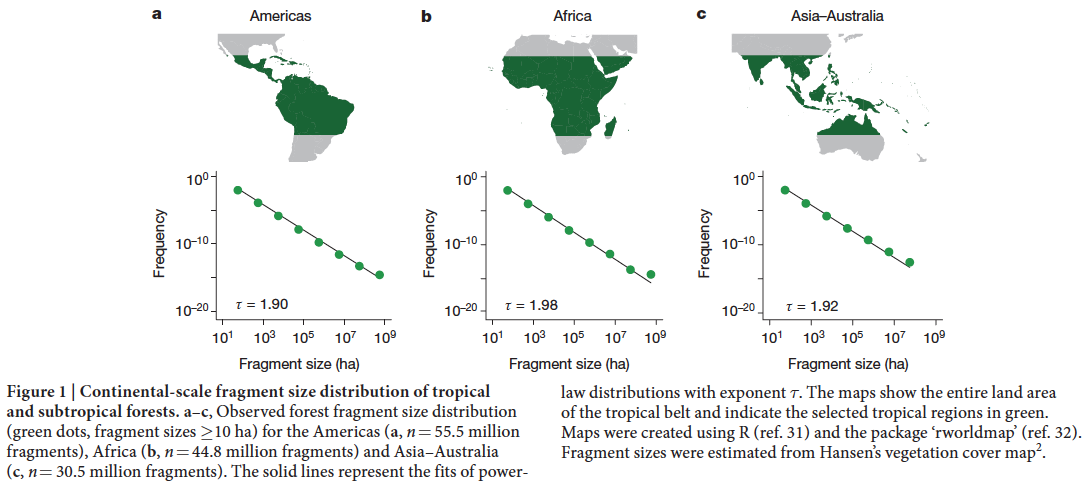
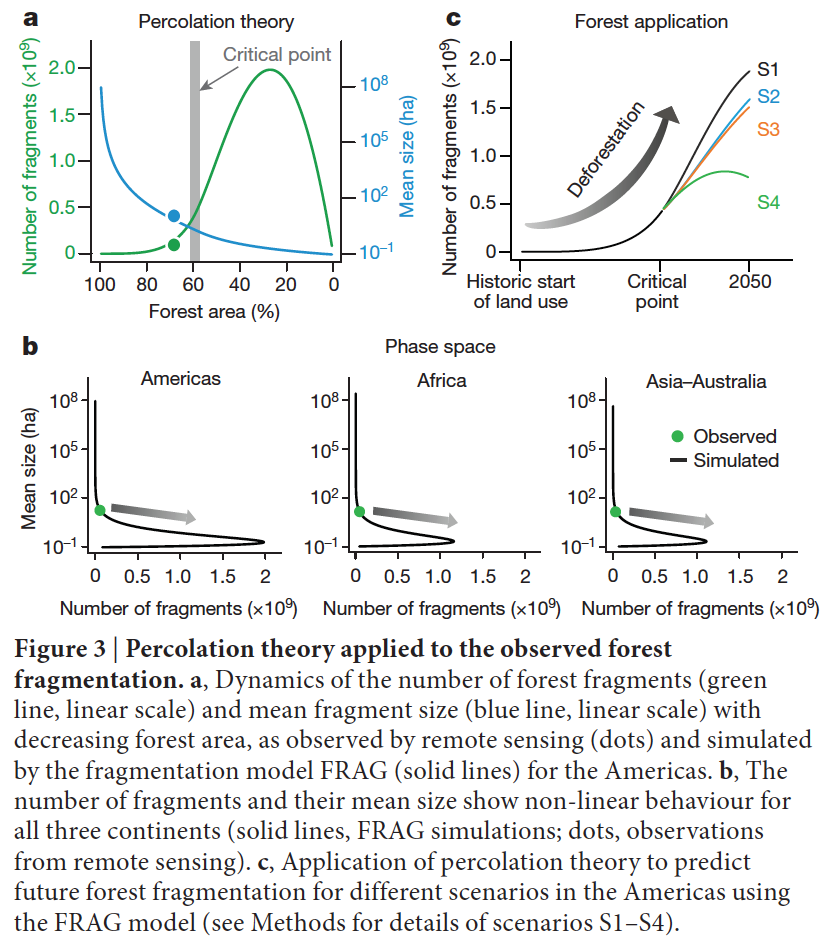
- Neutral landscape models: "Models lacking effects due to topography, contagion, disturbance history, and related ecological processes" (Gardner et al. 1987).
(2) Purposes of using neutral models in landscape ecology
(3) Percolation theory as a neutral model in landscape ecology
(2) Fire disturbance: The spread of a fire across a landscape depends on the density and/or spatial connectivity of fuel being above a critical level.
(3) Population outbreaks: For example, studies of the spread of Crown of Thorns starfish outbreaks on the Great Barrier Reef suggest that reef to reef spread depends on inter-reef connectivity being above a critical threshold.
(4) Species invasion: The invasion of some new species in a region depends on a critical density of sites available for colonization. For example, pollen studies of post-glacial plant migrants in eastern Canada show that many taxa were suppressed by lack of growing sites.
(5) Biodiversity: Changes in biological diversity in a
landscape may show threshold phenomenon in response to a
gradient of disturbance (frequency and intensity) such as fire.
- Fletcher, R. J., R. K. Didham, C. Banks-Leite, J. Barlow, R. M. Ewers, J. Rosindell, R. D. Holt, A. Gonzalez, R. Pardini, E. I. Damschen, F. P. L. Melo, L. Ries, J. A. Prevedello, T. Tscharntke, W. F. Laurance, T. Lovejoy, and N. M. Haddad. 2018. Is habitat fragmentation good for biodiversity? Biological Conservation 226:9-15.
- Fahrig, L., V. Arroyo-Rodriguez, J. R. Bennett, V. Boucher-Lalonde, E. Cazetta, D. J. Currie, F. Eigenbrod, A. T. Ford, S. P. Harrison, J. A. G. Jaeger, N. Koper, A. E. Martin, J. L. Martin, J. P. Metzger, P. Morrison, J. R. Rhodes, D. A. Saunders, D. Simberloff, A. C. Smith, L. Tischendorf, M. Vellend, and J. I. Watling. 2019. Is habitat fragmentation bad for biodiversity? Biological Conservation 230:179-186.
- Empirical and experimental evidence
- Haddad, N. M., L. A. Brudvig, J. Clobert, K. F. Davies, A. Gonzalez, R. D. Holt, T. E. Lovejoy, J. O. Sexton, M. P. Austin, C. D. Collins, W. M. Cook, E. I. Damschen, R. M. Ewers, B. L. Foster, C. N. Jenkins, A. J. King, W. F. Laurance, D. J. Levey, C. R. Margules, B. A. Melbourne, A. O. Nicholls, J. L. Orrock, D.-X. Song, and J. R. Townshend. 2015. Habitat fragmentation and its lasting impact on Earth’s ecosystems. Science Advances 1:e1500052.
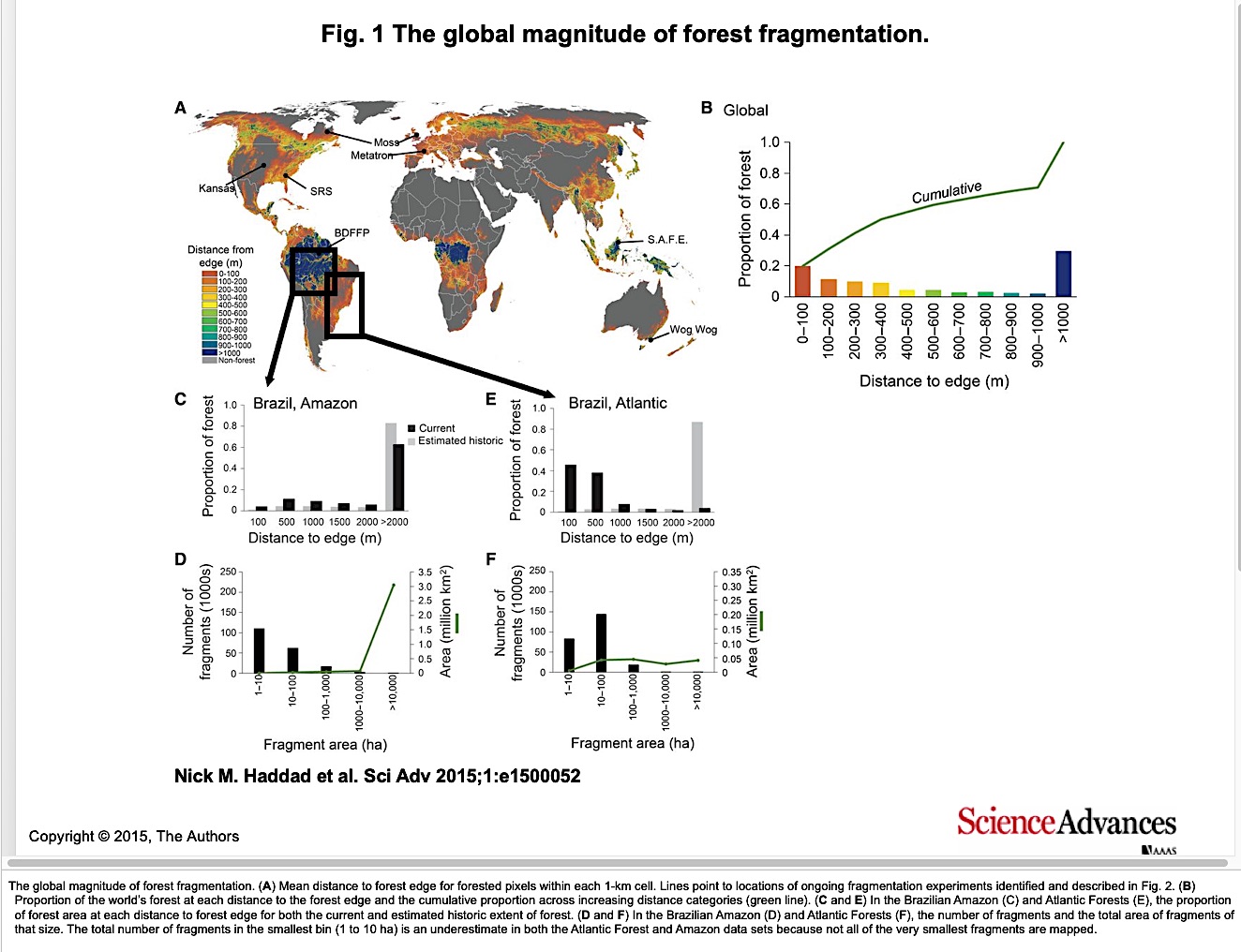
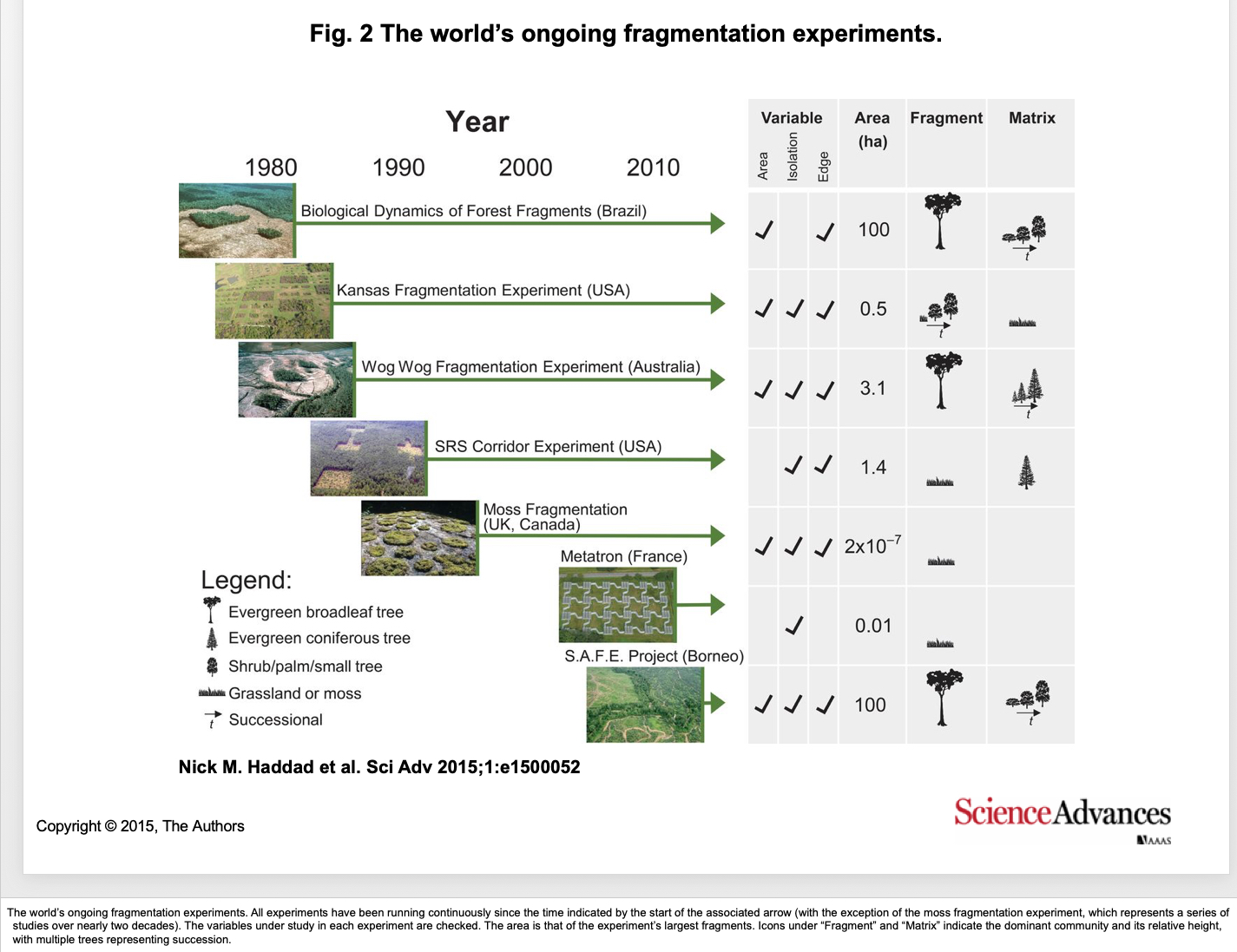
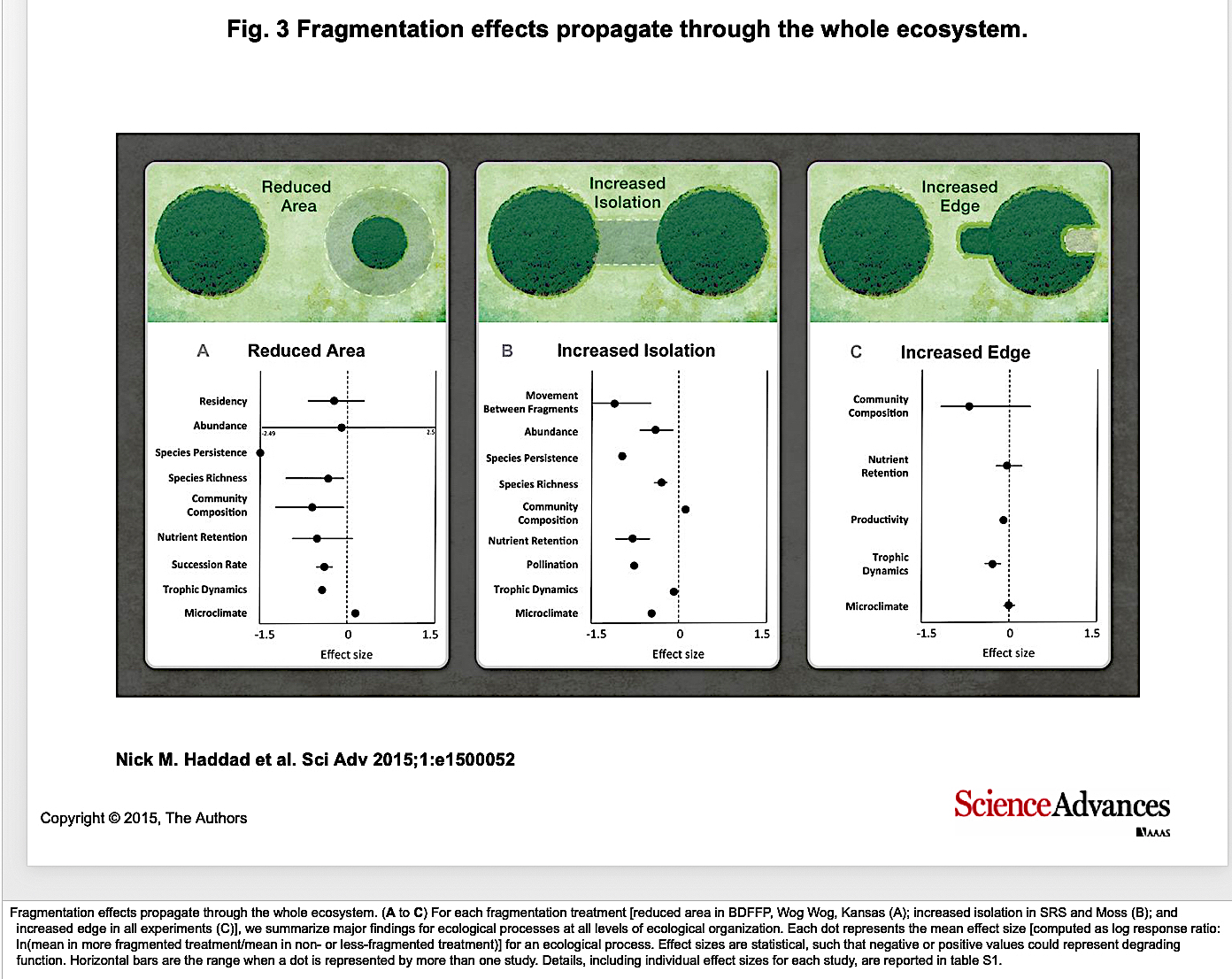
- Connecting natural habitats could help plant diversity endure | Science News [PDF]
- Scientists connected fragments of pine savanna and new species keep showing up
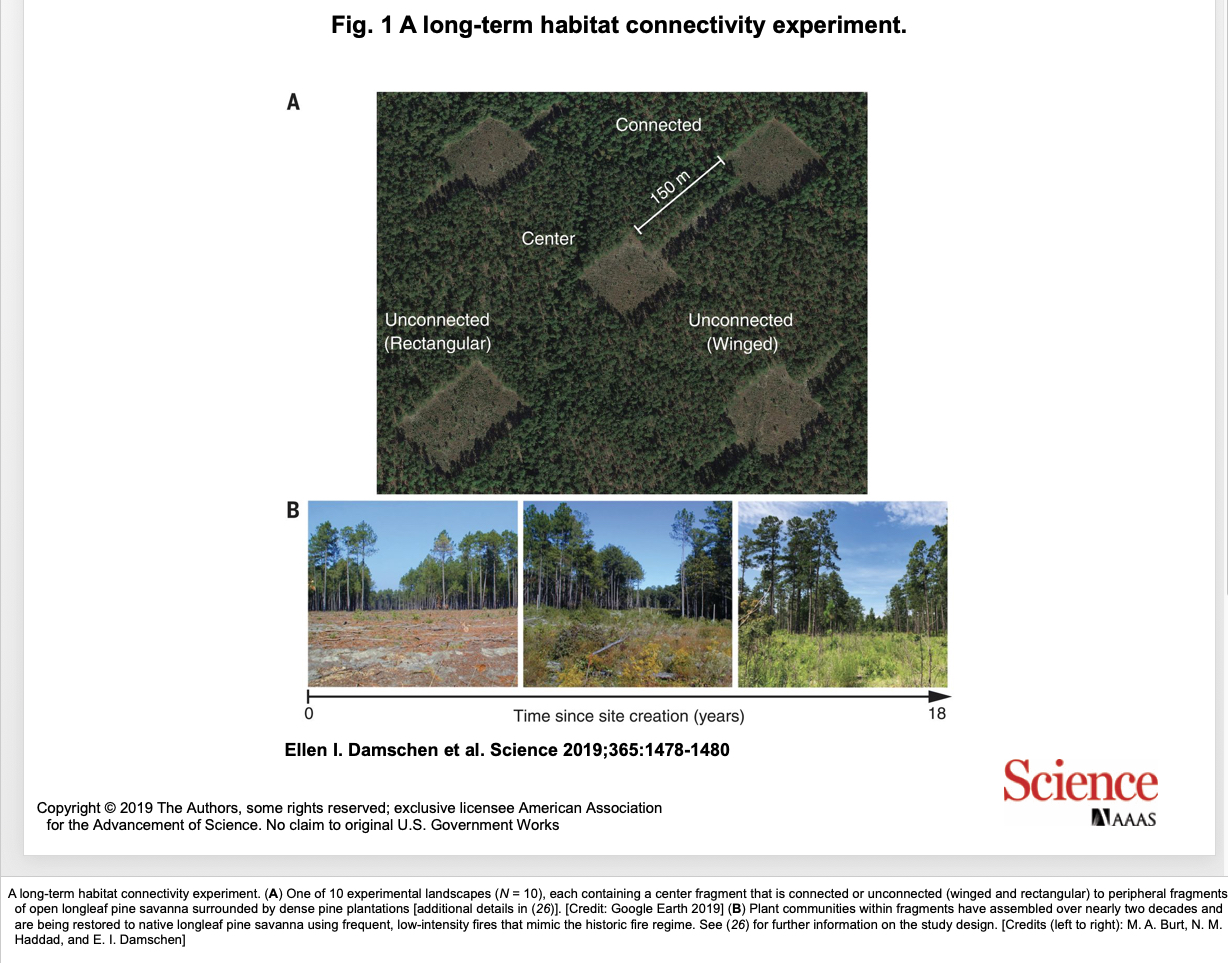
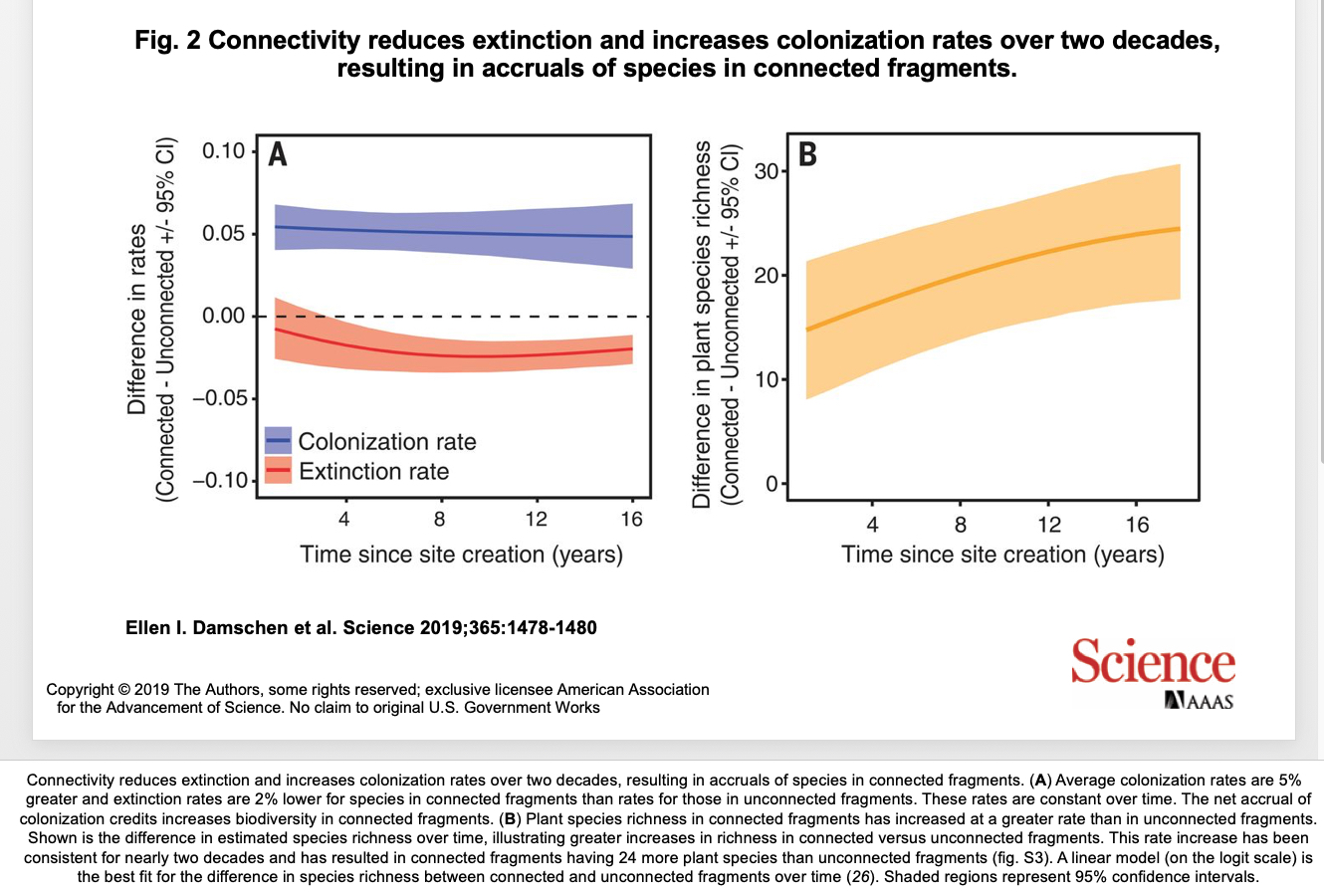
Then what?
- Miller-Rushing, A. J. et al. 2019. How does habitat fragmentation affect biodiversity? A controversial question at the core of conservation biology. Biological Conservation 232 (2019) 271–273.
- Valente, J. J., D. G. Gannon, J. Hightower, H. Kim, K. G. Leimberger, R. Macedo, J. S. Rousseau, M. J. Weldy, R. A. Zitomer, L. Fahrig, R. J. Fletcher, J. Wu, and M. G. Betts. 2023. Toward conciliation in the habitat fragmentation and biodiversity debate. Landscape Ecology:10.1007/s10980-10023-01708-10989.
Back to Dr. J. Wu's Landscape Ecology Homepage